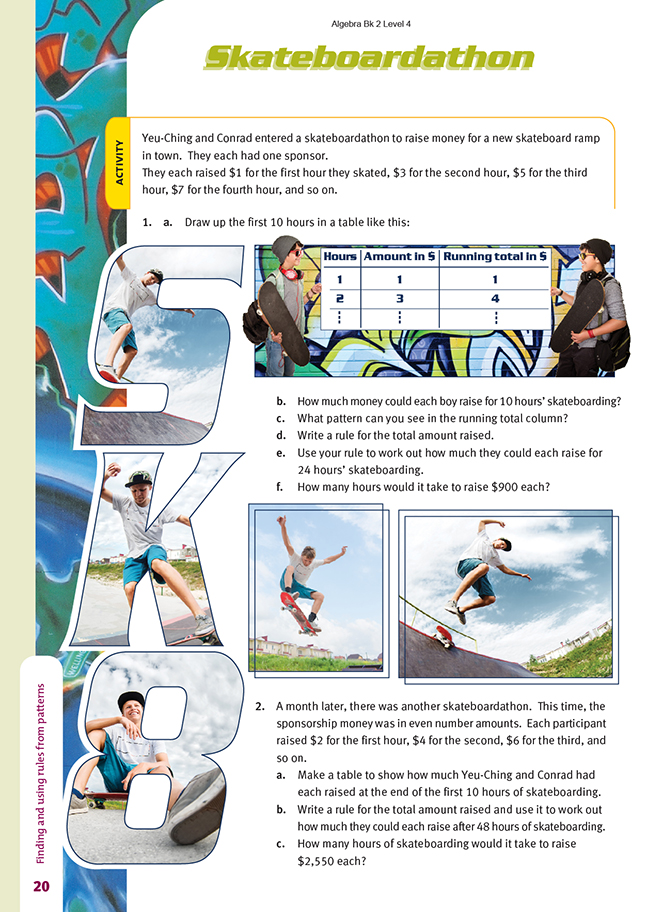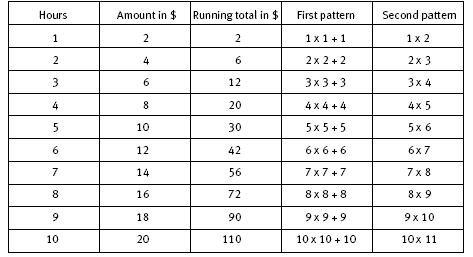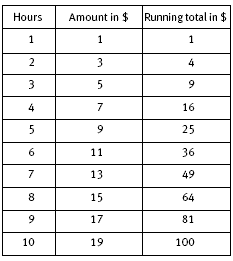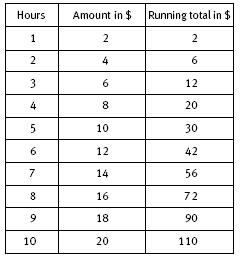This is a level 5 algebra strand activity from the Figure It Out series.
A PDF of the student activity is included.
Click on the image to enlarge it. Click again to close. Download PDF (324 KB)
use a table to continue a pattern
use a rule to describe a quadratic relationship
FIO, Level 4, Algebra, Book Two, Skateboardathon, page 20
In this activity, students use tables to organise data taken from a real-life situation. They look for patterns in the data to help them devise a rule for making sensible predictions related to raising money from the skateboardathon.
In question 1, the numbers in the running total column in the table form a simple pattern involving squares of the corresponding numbers in the hours column. The rule is: the amount raised by each boy is the square of the number of hours skated. Using algebra, if n is the number of hours on the skateboard, the value of the amount raised is n2 dollars. This corresponds to a simple but elegant mathematical rule: the sum of the first n odd numbers equals n squared, for example, 1 + 3 + 5 + 7 = 16, which is 42.
In question 2, there are two patterns that the students might recognise for the numbers in the running total column. It may be easier for the students to find these patterns if they compare the values in this table with those in the table for question 1.
A rule for the first pattern is: the amount raised by each boy is the square of the number of hours skated plus the number of hours skated. In algebra, if the skateboarding lasted for n hours, the value of the amount raised is n2 + n dollars. Note that this rule is n dollars more than in the rule for question 1.
A rule for the second pattern is: the amount raised by each boy is the product of the number of hours of skateboarding and 1 more than the number of hours of skateboarding. So if the skateboarding lasted for n hours, the value of the amount raised is n x (n + 1) dollars. This algebraic rule is usually expressed as n(n + 1). Using the rule for the first pattern gives 24 x 24 + 24 = $600. The second rule also gives $600 from the calculation 24 x 25. Algebraically, n(n + 1) can be expanded to give n2 + n, so the two rules are equivalent.
Answers to Activity
1. a.
b. $100
c. Each number in the running total column is the square of the number in the hours column.
d. A possible rule is: the amount raised by each boy is the square of the number of hours skated.
e. $576. (24 x 24)
f. 30 hours
2. a.
b. One possible rule is: the amount raised by each boy is the square of the number of hours skated plus the number of hours skated. So for 48 hours’ skateboarding, the amount earned is 48 x 48 + 48 = $2,352.
A second possible rule is: the amount raised by each boy is the product of the number of hours of skateboarding and 1 more than the number of hours of skateboarding. So for 48 hours' skateboarding, the amount earned is
48 x 49 = $2,352.
c. 50 hrs. (50 x 51 = 2 550)



